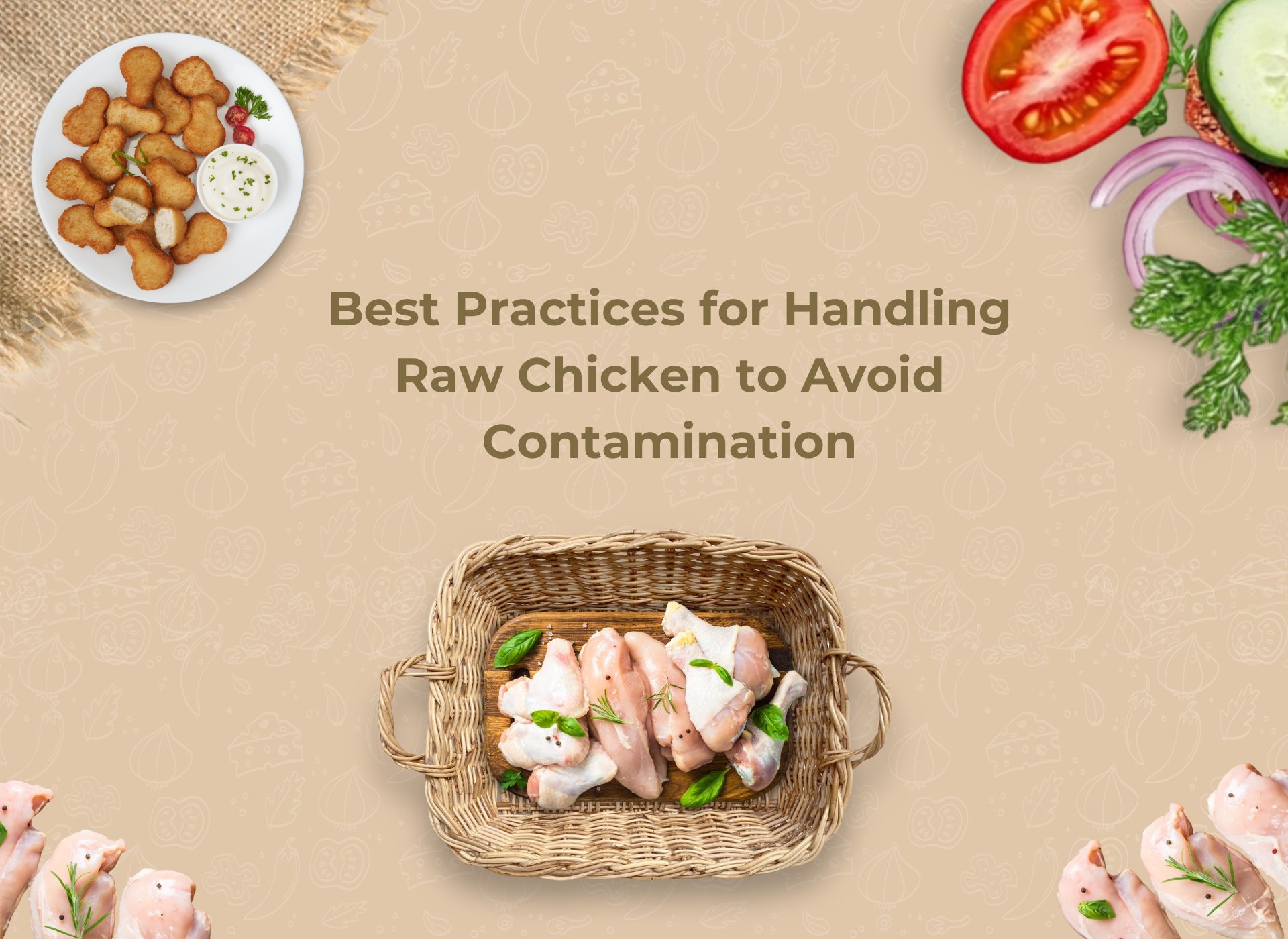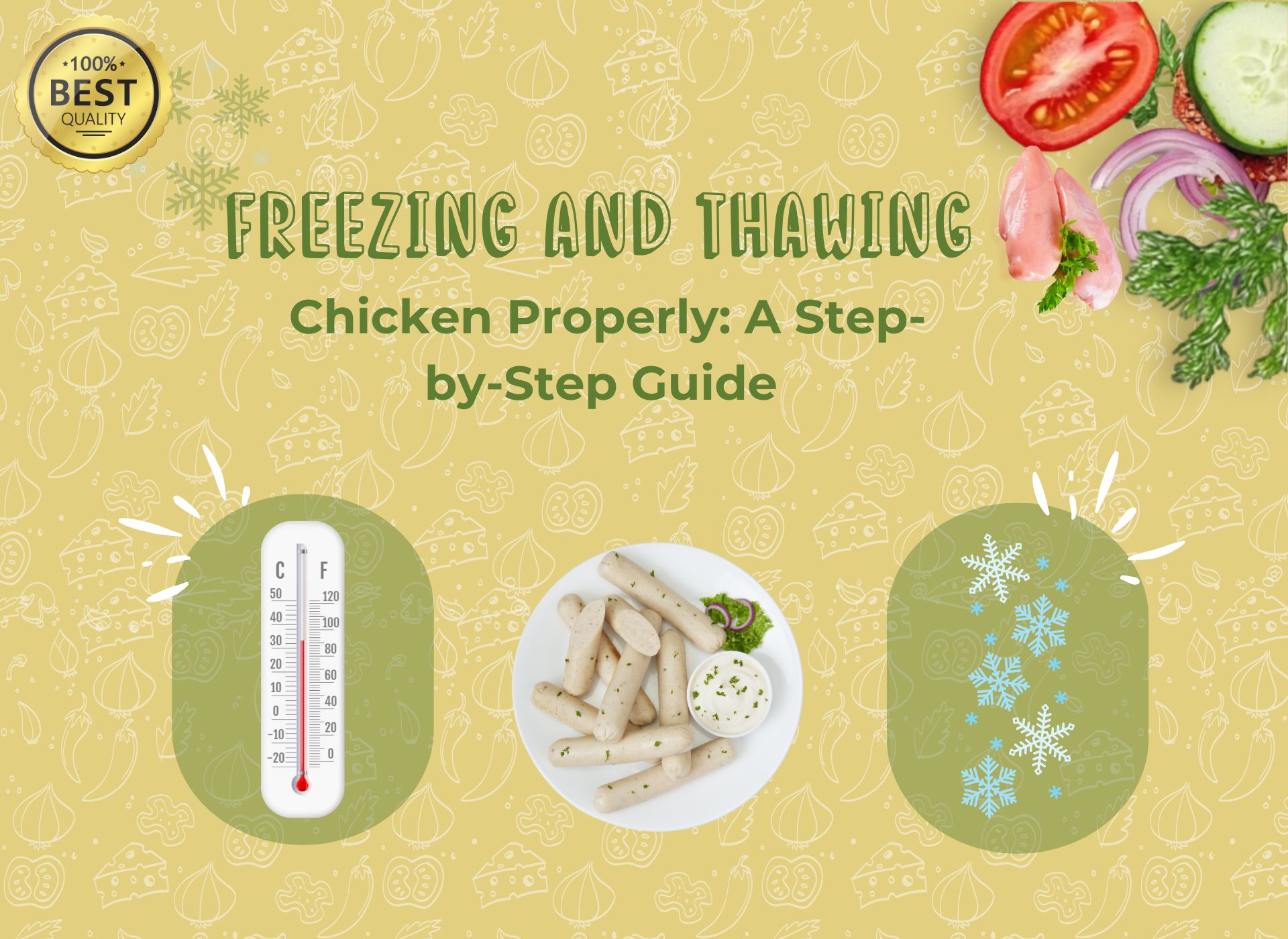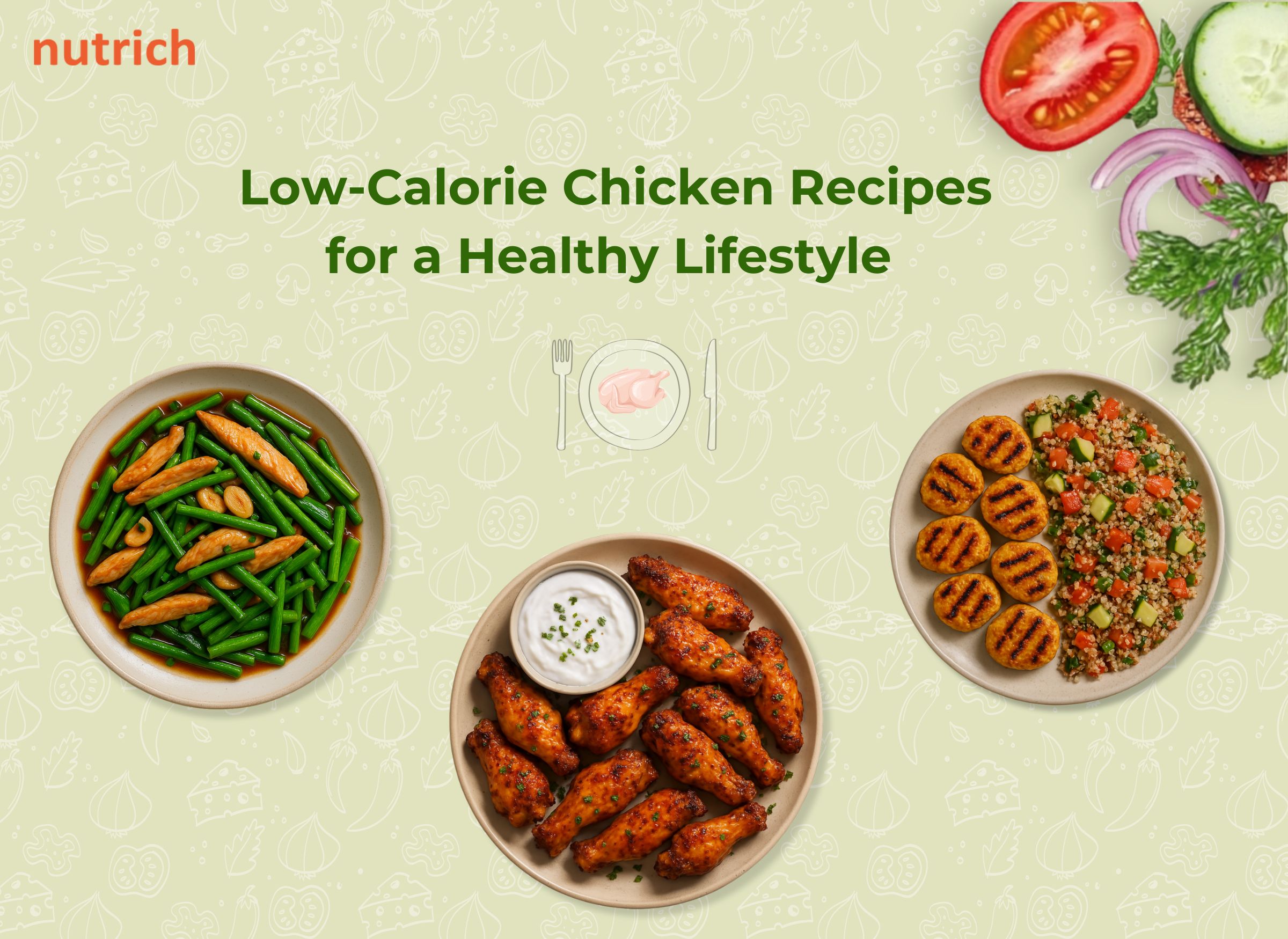Raw chicken is a common ingredient in many kitchens, but improper handling can lead to foodborne illnesses caused by harmful bacteria like Salmonella and Campylobacter. Following proper food safety guidelines can significantly reduce the risk of contamination and ensure safe consumption. In this guide, we will explore the best practices for handling raw chicken, from purchasing and storage to cooking and cleaning, helping you maintain a hygienic kitchen environment.
1. Purchasing the Right Chicken
Ensuring food safety starts at the grocery store. Here are a few important tips for selecting the safest raw chicken:
- Check the Expiry Date: Always verify the “use by” or “sell by” date on the package.
- Choose Cold and Properly Sealed Packages: Raw chicken should be stored at or below 40°F (4°C) in grocery stores. Ensure there are no leaks or damages in the packaging.
- Separate from Other Groceries: Keep raw chicken separate from ready-to-eat food items to prevent cross-contamination.
- Use a Plastic Bag: Placing chicken in a separate plastic bag prevents raw juices from leaking onto other groceries.
2. Storing Raw Chicken Safely
Proper storage is essential to prevent bacterial growth and contamination. Follow these guidelines:
- Refrigerate Immediately: Store raw chicken in the refrigerator at 40°F (4°C) or lower within two hours of purchasing.
- Store on the Bottom Shelf: Place raw chicken on the lowest shelf in a sealed container to prevent drips onto other food items.
- Freeze for Longer Storage: If not cooking within 1-2 days, freeze the chicken at 0°F (-18°C). Properly wrap the chicken in freezer-safe bags to prevent freezer burn.
- Label and Date Packages: Keeping track of storage dates ensures you use older chicken first, reducing waste.
3. Preparing Raw Chicken the Right Way
Handling raw chicken properly before cooking can prevent contamination. Here’s what to do:
- Wash Hands Before and After Handling: Use warm, soapy water to wash hands for at least 20 seconds before and after touching raw chicken.
- Do Not Wash Raw Chicken: Washing can spread bacteria through splashing water onto nearby surfaces.
- Use Separate Cutting Boards: Always use a dedicated cutting board for raw chicken to prevent cross-contamination.
- Keep Utensils Separate: Avoid using the same knives and utensils for raw and cooked foods.
4. Cooking Chicken to the Right Temperature
Cooking raw chicken thoroughly kills harmful bacteria. Follow these tips to ensure safe cooking:
- Use a Meat Thermometer: Check the internal temperature of chicken. It should reach at least 165°F (75°C).
- Avoid Guesswork: Cutting into the chicken to check doneness can lead to loss of juices, making it dry.
- Cook Evenly: Ensure uniform cooking by flattening thick pieces before cooking.
- Allow Resting Time: Let cooked chicken rest for a few minutes before cutting to retain moisture.
5. Cleaning and Sanitizing After Handling Raw Chicken
Proper cleaning prevents the spread of bacteria. Follow these cleaning protocols:
- Wash Hands Again: Clean hands immediately after handling raw chicken.
- Disinfect Surfaces: Use a bleach solution or antibacterial cleaner to sanitize countertops, sinks, and cutting boards.
- Wash Utensils and Equipment: Use hot, soapy water to clean knives, cutting boards, and other utensils.
- Change Dish Towels Regularly: Bacteria can linger on dish towels and sponges, so replace them frequently.
6. Preventing Cross-Contamination in the Kitchen
Cross-contamination can occur when bacteria from raw chicken spreads to other food items. Here’s how to prevent it:
- Keep Raw and Cooked Foods Separate: Never place cooked chicken back onto the same plate used for raw chicken.
- Use Different Storage Containers: Store raw and cooked food in separate, airtight containers.
- Disinfect Hands and Surfaces: Always clean hands and kitchen surfaces after touching raw chicken.
- Be Mindful of Drips and Spills: Immediately clean any raw chicken juices that may have spilled.
7. Safe Handling of Leftovers
If you have leftover cooked chicken, follow these guidelines to ensure safety:
- Store Promptly: Refrigerate leftovers within two hours of cooking.
- Use Airtight Containers: Keep leftovers in sealed containers to prevent contamination.
- Reheat to 165°F (75°C): Always reheat leftover chicken to the correct internal temperature before consuming.
- Consume Within 3-4 Days: Discard any leftovers after this period to avoid spoilage.
8. Understanding the Risks of Foodborne Illnesses
Raw chicken can harbor harmful bacteria like Salmonella and Campylobacter. Symptoms of foodborne illness include:
- Nausea and Vomiting
- Diarrhea and Abdominal Cramps
- Fever and Chills
Following safe handling practices can significantly reduce the risk of contamination and illness.
9. Common Myths About Handling Raw Chicken
- Myth: Washing Chicken Removes Bacteria – In reality, washing chicken spreads bacteria rather than removing it.
- Myth: If Chicken Looks Fresh, It’s Safe – Bacteria are invisible; always check expiration dates and storage conditions.
- Myth: You Can Tell Chicken is Cooked by Color – The only way to be sure is by using a meat thermometer.
10. Final Tips for Safely Handling Raw Chicken
- Always Wash Hands Before and After Handling
- Use Separate Kitchen Tools for Raw and Cooked Foods
- Store and Cook Chicken at the Correct Temperatures
- Clean and Sanitize Surfaces Regularly
- Follow Expiry Dates and Storage Guidelines
Conclusion
By following these best practices for handling raw chicken, you can reduce the risk of foodborne illnesses and ensure that your meals are safe and delicious. From purchasing and storage to cooking and cleaning, every step plays a crucial role in preventing contamination. Keep your kitchen hygienic, follow food safety guidelines, and enjoy your chicken dishes with peace of mind!





